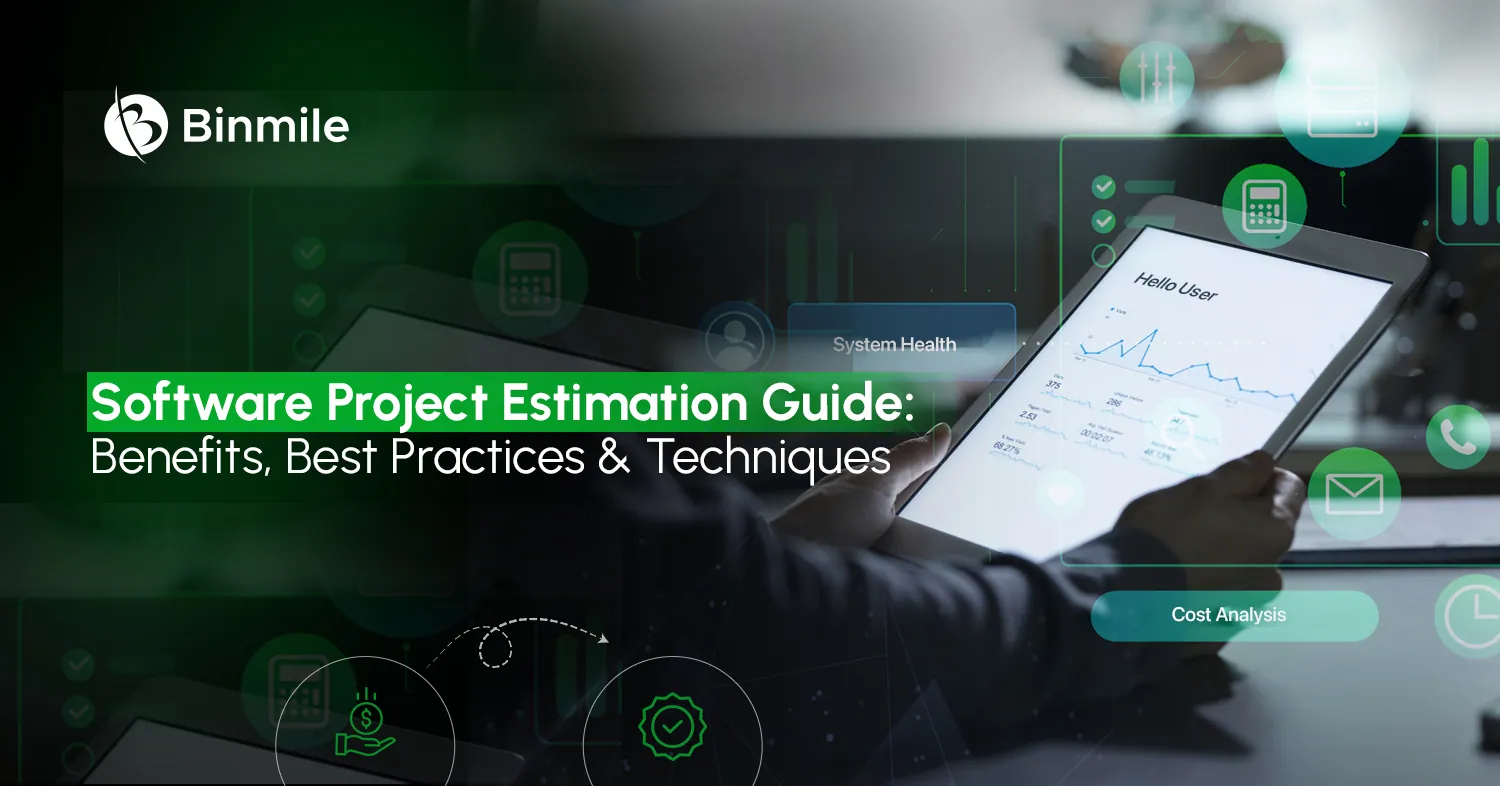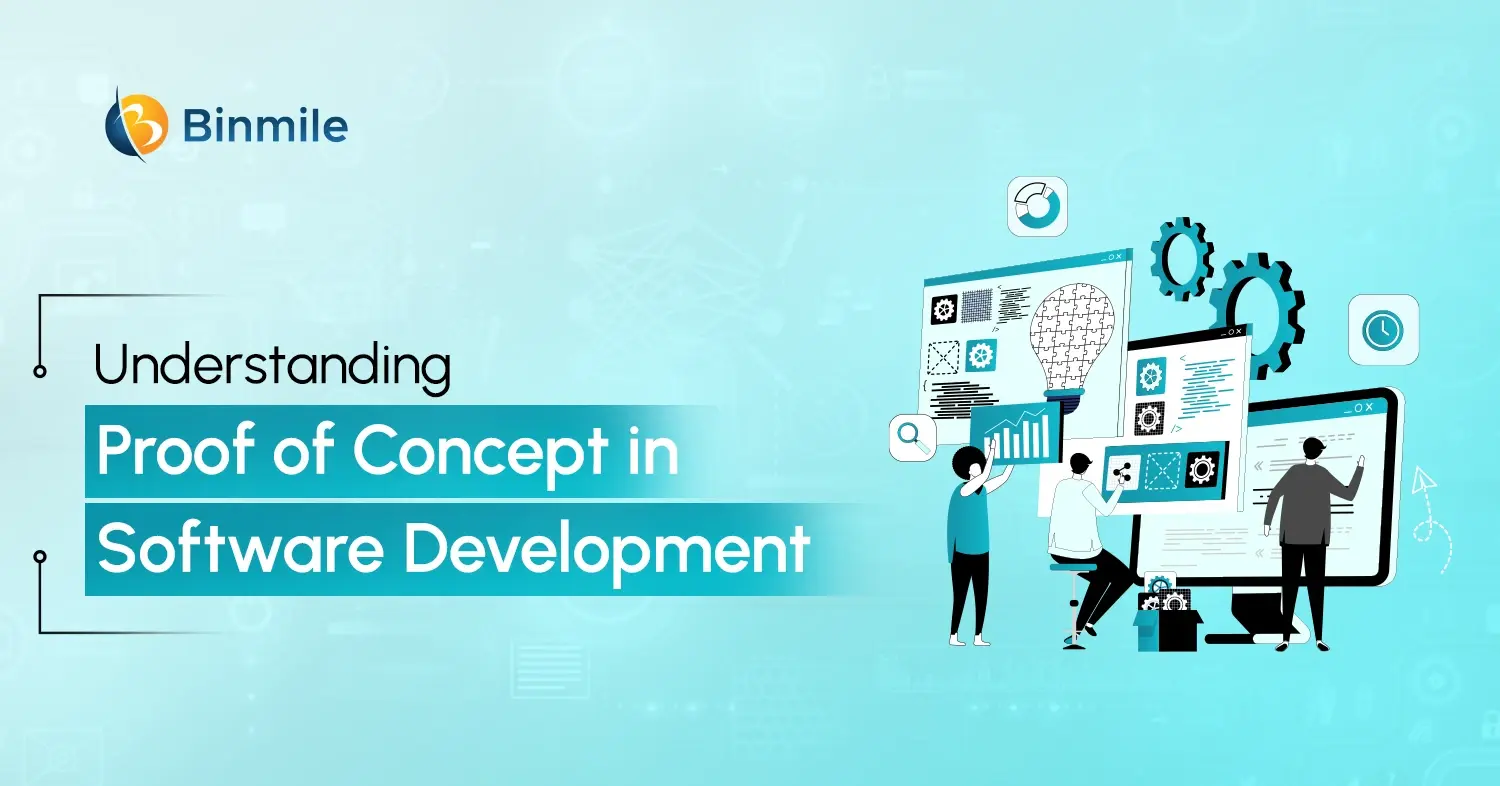- benefits of software project estimation
- best practice for software estimation
- estimation of software projects
- estimation software project management
- software development estimation
- software project estimation
- software project estimation in software engineering
- software project estimation process
- software project estimation tools
- software project time estimation
It’s the ultimate goal of every software development company to deliver software projects on time and within budget. However, making this possible is a constant battle for the development teams because anticipating the exact amount of time or cost needed to develop a product is easier said than done. Without accurate estimates, your project may fall behind schedule or exceed your budget, so what to do? A key weapon in this struggle? Effective software project estimation. Of course, predicting the future perfectly is impossible, but certain practices can significantly help you ace estimation accuracy with custom software development services like a pro!
In this blog, we’ll understand 7 best practices to refine your estimations from tentative approximations to reliable roadmaps. We’ll also discuss software project estimation and explore its top benefits. Let’s dive into essential tips to transform your software project estimates from guesses to reliable guides!
Maximizing Project Success: 7 Steps For An Effective Software Project Estimation

Software development thrives on clear roadmaps; a crucial element of that roadmap is accurate project estimation. As, precise estimates translate to efficient resource allocation, realistic timelines, and ultimately, satisfied stakeholders. Here are 7 steps to guide you toward effective software project estimation:
1: Define and Refine Requirements
Establish project requirements before you set up software project estimation. Properly communicate the expectations or metrics by detailing all the functionality to them and avoid misunderstanding. Schedule regular discussions to minimize the impact of ambiguities and validate assumptions. If requirements can be stated with greater specificity, estimates can reflect that. Consider objectives or requirements, and assume that they are the blueprint of your project; therefore the better defined and specified, the better the chances of providing a correct estimation of time and resources.
2: Embrace a Work Breakdown Structure
Large and monolithic projects make estimation challenging, therefore try to divide and conquer using a work breakdown structure (WBS). It’s a strategic guide that breaks down a project into segments, by doing so a project manager or a planner can easily predict the time and energy it will take to complete each segment. It enables you to take a top-down look at your project and break it into the tasks and subtasks that will get you to completion. It’s a helpful tool that defines a detailed cost or time estimate and provides guidance for schedule development and control.
3: Choose the Right Estimation Technique
A one-size-fits-all approach doesn’t exist for estimation. Different techniques work better in different scenarios. Consider these popular options:
- Top-down estimation: It breaks the project into high-level features and estimates effort based on experience. This is a good starting point for initial estimates, especially for larger projects.
- Bottom-up estimation: Break down the project into smaller, more granular tasks and estimate effort for each. It provides more detailed estimates but can be time-consuming for complex projects.
- Three-point estimation: Estimate optimistic, most likely, and pessimistic scenarios for a task to account for uncertainty. This approach acknowledges the inherent variability in software development and helps create a more comprehensive picture of potential timelines.
4: Leverage Historical Insights
If your team has worked on similar projects, gather historical information of effort and time. By identifying trends, patterns, and outliers in historical data, you can paint a picture of the type of resources and time likely to be used in the current project. Also, project managers can develop more accurate cost estimates that are similar in terms of characteristics or complication levels and avoid common pitfalls.
5: Get the Basics of Estimation Right
There are primary principles of software project estimation that help you navigate the uncertainties and risks associated with software development services with confidence and deliver exceptional digital products. So, understand these 4 in software project estimation:
- Project Size: Measured in units like function points or lines of code, this establishes the overall scope of the project.
- Delivery Timeline: Expressed in months, this estimates the duration required to complete the project.
- Project Cost: This factors in development expenses, personnel costs, and any additional fees associated with the project.
- Resource Allocation: Represented in person-months or person-hours, this estimates the total effort required from the development team.
6: Involve All Stakeholders In Transparency
Engaging all the stakeholders such as developers, designers, and testers, and their estimates, their opinions on specific tasks and possible difficulties. This will help you to produce more accurate figures and promote a better understanding of the project and the level of responsibility is higher, which in turn creates more realistic expectations. Also, consider transparency in communication as it builds trust with stakeholders and ensures everyone is aligned on the project timeline and resource allocation.
7: Embrace Iteration and Refinement
Depending on the phase of the project, the requirements could change, so be prepared to revisit and refine your estimates as needed. One must conduct regular tracking and monitoring of progress and adaptation based on new information helps keep projects on track. Estimation is an iterative process, not a one-time event. This means that estimation is cyclic and not a one-off. Remember that even an accurate estimate can be greatly altered with the progress in the SDLC or when you get more data and unexpected obstacles arise.
Planning to build custom software? Get a free consultation with us to help you plan and estimate your software development project.
Software Project Estimation: An Overview
What Is Software Project Estimation?
It’s a crucial step in software engineering that focuses on predicting the time and budget of a project. It also focuses on the experience of the best software development company and the techniques it leverages to define the perfect plan to develop and finish the project.
Moreover, software project estimation may cost the company at the initial stage. However, it’s the stepping stone for building a product that should be more realistic, credible, and customer-centric with zero compromises on cost and quality. Additionally, a well-planned software project estimation helps companies resolve several pain points throughout SDLC:
- Framing a detailed task sheet of what should be done and who will be responsible for every task
- Building a solid development team that should be adequate to complete the project
- Determining the estimated budget of the project cost centers, cost control areas, software cost estimation, and much more
- Drawing the estimated deadline of the project
Read Also: Payroll Software Development
Closing Statement
Imagine the professional advantage of consistently delivering projects on time and within budget. That’s why software project estimation is essential in a digital product lifecycle. It offers a realistic outlook on the amount of effort and budget you need for your project. However, effective estimation is more than just numbers; it’s the bedrock for establishing a solid foundation for a successful software development process from its inception. Therefore, you must know best practices and integrate them into your workflow. This will pave the way for efficient software project estimation, help you cultivate trust with stakeholders, and establish a culture of transparency within your team.
If you want to achieve excellence in the software development landscape, but don’t have an in-house team, we are ready to help you. Whether you need an MVP development for FinTech or internal software for your business, our expert team can build a product from scratch, covering all project-related tasks from planning and estimating to development, testing, and deployment!
Frequently Asked Questions
Here are the 5 main stages of finding out the project estimates:
- Review the scope of the project and talk to your client about expectations.
- Draft an approximate timeline.
- Price out any subcontractors if you need additional labor.
- Calculate your materials costs and business expenses.
- Compare your rates against competitors.
Develop two estimates for each task: a baseline estimate, which represents a realistic expectation of the task’s completion time, and an outlier estimate, which accounts for potential unexpected challenges and reflects a more conservative completion time that would be achieved 90% of the time.
- Factor estimating: Also known as top-down estimating, is a high-level technique used when the project scope is not well-defined yet. It applies derivative factors to prepare the investment estimate for the project. This provides a “quick and dirty” cost number to base decisions on, rather than spending time on detailed estimates. Common factor estimating techniques include the Six-Tenth Rule and the Hand Factor Method.
- Parametric estimating: It uses historical project data and statistics to calculate the expected resources needed to complete a project, such as cost or time. It involves developing cost estimation relationships (CERs) that link project parameters to costs. This technique can provide accurate and precise estimates, especially for large projects, by leveraging past data.
- Quantitative Factor Estimating: As the project scope becomes more defined, quantitative factor estimating can be used. This technique moves beyond simple factoring and uses quantities to determine project costs. It relies on design standards to derive typical quantities for equipment, piping, valves, etc. to include in the estimate.
- Unit-Rate Estimating: Once the project’s basis of design is finalized, unit-rate estimating provides the most detailed cost estimates. This technique uses the specific unit rates (cost per unit) for labor, materials, and equipment to calculate the total project costs by multiplying the unit rates by the quantities.
These 4 techniques cover the full lifecycle of a project, from high-level factor estimating in the early stages to the most detailed unit-rate estimating once the design is complete. The appropriate technique to use depends on the current phase of the project and the level of detail available.
The software project estimation process involves a series of steps to predict the time, cost, and resources required for a software project. It aims to provide stakeholders with an understanding of what is needed to complete the project successfully.
Some widely used software project estimation tools include:
- Jira: Known for its agile project management capabilities, it also offers estimation features.
- Trello: A visual project management tool that can be adapted for estimation purposes.
- Function Point Analysis Tools: Such as QSM’s SLIM and Compucount.
- EstimationPro: A dedicated tool for detailed project estimation.
- Planning Poker Tools: Various online platforms that facilitate collaborative estimation sessions.









